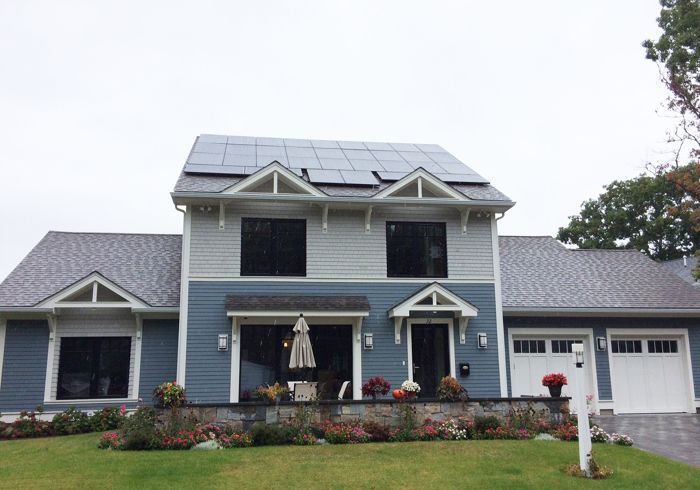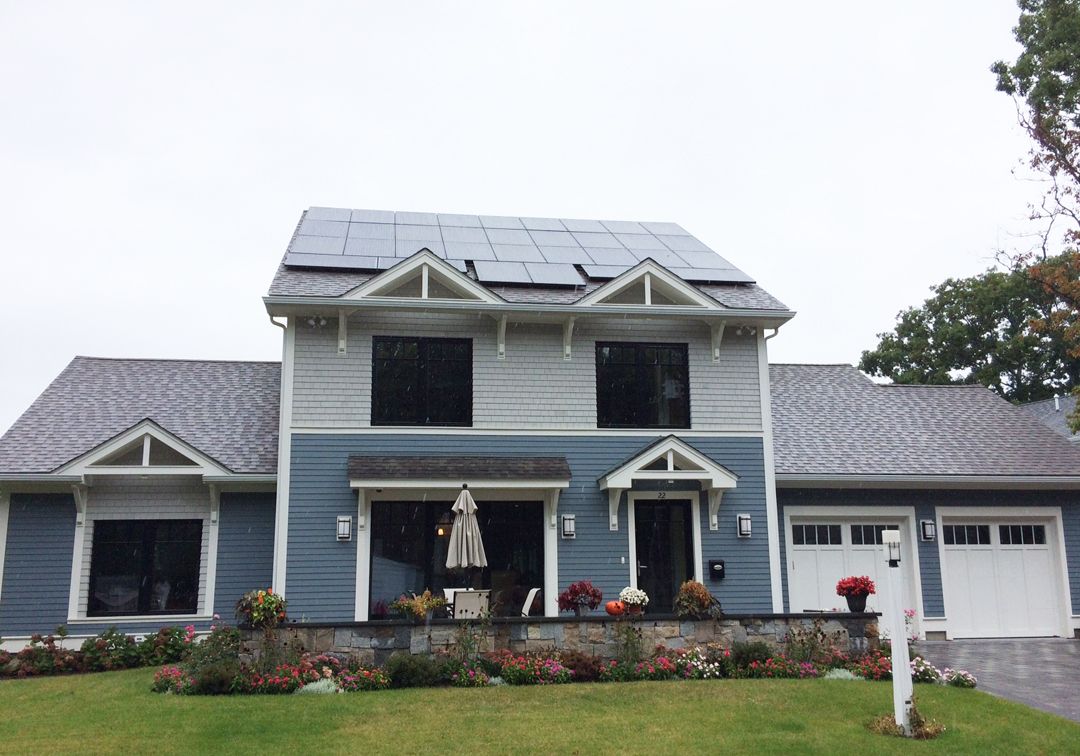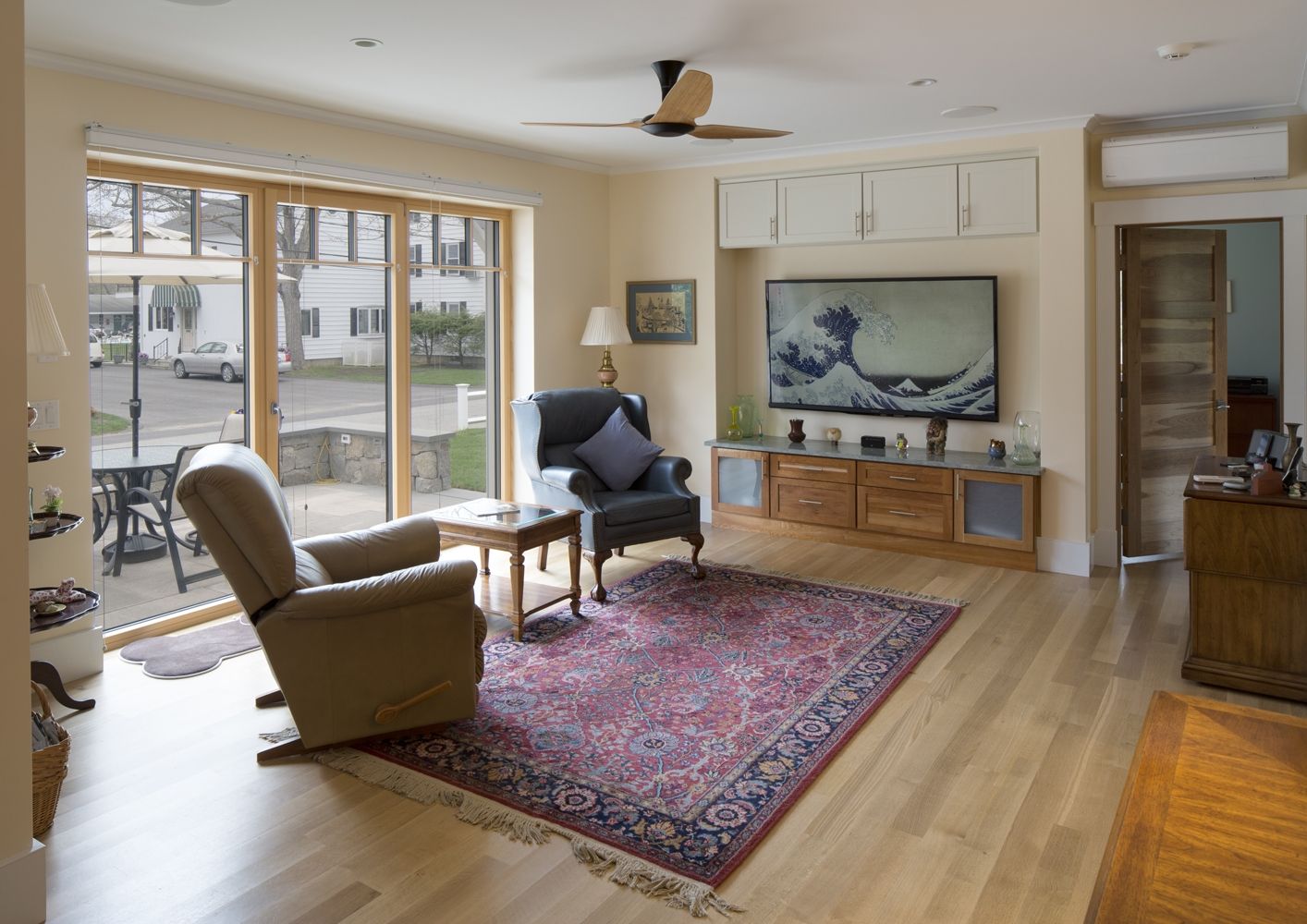
We moved in to our new house on New Year’s Day 2014. We have found that living in a Passivhaus is fantastic, and the house performs as expected.
During our first winter, we experienced one of the most severe tests we will ever face in our Passivhaus. The cold “polar vortex” winter of 2014 was one of the toughest winters in many years. In spite of this, the house remained very comfortable.
On sunny days, the minsiplit heat pump stayed off
To us, comfortable meant temperatures from about 65°F to 70°F, relative humidity of about 40%, and of course no drafts. We found ourselves rarely using the backup minisplit heat pump. If the sun was shining during the day, the sun and internal heat sources (people, dogs, appliances, etc.) in the house were sufficient for us to remain comfortable all day and night, and we didn’t need to turn on the backup heat. Indeed, for our preference, we would have preferred a somewhat colder bedroom for nighttime sleeping.
If the day was cloudy, we turned on the heat pump, usually for an hour or two. We found that once the heat was inside the house, it wasn’t going anywhere very quickly. We found ourselves using the heat pump maybe once a week. Admittedly, we had some extra heating assistance from our other heat source, our 8-year-old plasma TV, which cranks out a warming 500 watts when we watch it in the evening. We have since replaced the TV with an LED unit that consumes only 120 watts.
Energy-stingy ways to stay cool
During the spring, we kept the windows closed most of the time to keep out the pollen and relied on the inlet air filtration of our ERV. Our ERV is equipped with a pre-cooling ground loop, and that system was usually sufficient to keep the house comfortable.
This summer, we experienced what it was like living in a coastal humid climate. With outdoor relative humidities consistently at 80% or higher, we wanted to keep the house at about 55% RH. We did this by running the heat pump in either AC (“cool”) or dehumidification (“dry”) mode through most of July and August. Our ceiling fans are equipped with high-efficiency DC motors, and we ran these fans much of the time. These methods kept the house very comfortable (75° to 78°F). In spite of this, our monthly electric bills went up by only about 100 kWh (or $20, based on our electricity cost of 20 cents per kWh here on the Cape).
During the fall, we typically open two or three windows on both the first and second floors to allow for natural stack-effect cooling, provided the humidity is low.
Fresh ventilation air
We love the idea of living in a house that has no combustion and 24/7 ventilation. This keeps the air fresh and filtered (when we keep the windows closed).
Everything in the house is electric, including the heat-pump water heater, the induction cooktop, the clothes dryer, and the backup heating and cooling systems. With the house so tight and insulated, we have found the interior to be very quiet. Only our dogs seem to be able to detect the faint barking sounds out there.
The wi-fi signal was blocked
One disadvantage of a tight house is that wi-fi signals are unable to penetrate the walls, just like the heat energy. Future Passivhaus buildings should have exterior Ethernet connections so that people on decks and patios can be online.
Another product which could use improvement is the condensing clothes dryer – a dryer does not exhaust to the outside. It is small and inefficient to run. With a Passivhaus, there is no simple non-mechanical way to use exterior exhausting products like conventional clothes dryers and range hoods. Even when we run our 120-cfm central vacuum cleaner, it is pulling a vacuum on the inside of the house. If we leave a window cracked, the vacuum airflow will pull it open. The reason is that there is no easy way to get the high air flows needed for these devices, unlike in a conventional house where the extra air is supplied by leakage through cracks and crevices in the house.
On track to be net-zero
We are on track to use about 7,200 kWh per year for our all-electric house. This is the same number of kWh we used in our previous conventional house, but at that house everything was gas (heat, hot water, clothes dryer, and cooking). The new photovoltaic system that we installed will generate about 10,000 kWh annually, enough to also power a future electric car and still have our new home be net zero. I should get about 10,000 miles with the 2,500 excess kWh that my PV system provides.
Dan Roy is a Certified Passive House Consultant (CPHC) with PHIUS and a licensed professional engineer (mechanical) in Massachusetts. He worked many years in various engineering jobs, but this is his first Passive House design. Dan wanted to live in his first design so that he could experience it firsthand and share what it is like living in a Passive House. For more, check out the articles and videos about it’s design and construction.
Fine Homebuilding Recommended Products
Fine Homebuilding receives a commission for items purchased through links on this site, including Amazon Associates and other affiliate advertising programs.

8067 All-Weather Flashing Tape

Affordable IR Camera

Reliable Crimp Connectors





























